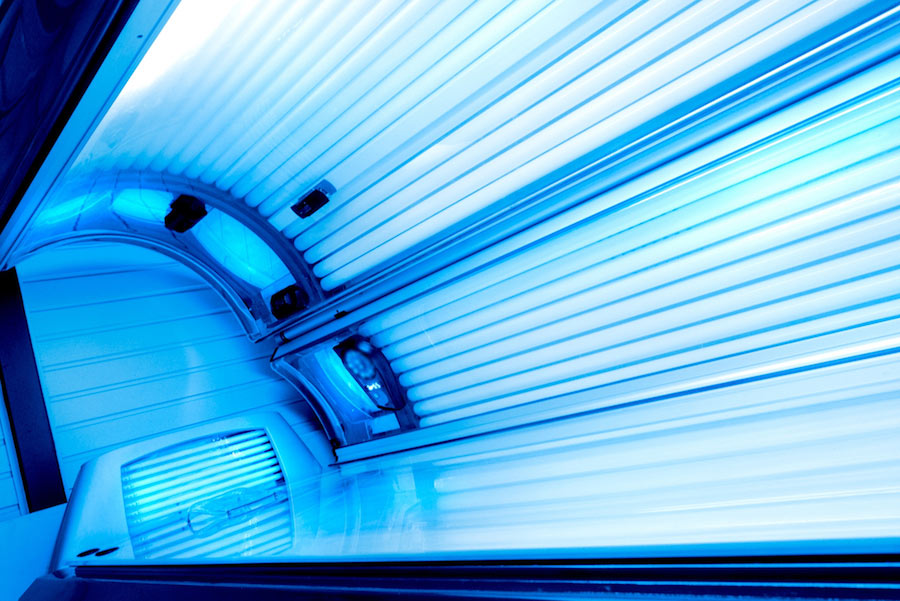As we get ready to announce our 2018 Media Award winner, we caught up with past recipient Jenna Rosenstein, who won for her article highlighting indoor tanning on campuses. Two years later, the impact of the article is still reverberating and remains an important topic of conversation.
Your article in Allure’s September 2016 issue titled “Harsh Light” broke ground on a topic that had not been covered extensively in consumer magazines before. What made you interested in this subject?
I grew up in sunny South Florida with fair, freckled skin and a mother who was diagnosed with melanoma twice. I have always been obsessive about sun protection because I feel like I’m a ticking time bomb for skin cancer. As for “Harsh Light,” I was assigned a story earlier in the year about sunscreen and skin cancer rates among young women, and in reporting that story, I came across the studies detailing the trend of free tanning on college campuses. My editors wanted to make it an investigative feature, and I jumped at the opportunity to write it.
How did you approach your investigation?
I flew out to a campus in Arizona in the middle of the summer to see the tanning beds for myself. It felt hotter than the sun outside, yet students could still get their tanning fix at a free, unsupervised tanning bed inside a gym at student housing. I couldn’t believe it. I spent the next few weeks talking to college students — and almost all of them acknowledged the risk but were mostly apathetic. It’s no different than smoking cigarettes in terms of cancer risk, and I hope I was able to make that click for them.
Were you shocked to learn that so many colleges had tanning beds either on campus or nearby?
Shocked doesn’t even begin to describe it. I think, given more time to report the story, I could have dug even deeper to find more damning links between universities who have accepted federal grant money for cancer research and their affiliations with tanning salons. It seems like a legal liability, doesn’t it? If a student gets diagnosed with skin cancer, and the only place she ever tanned in a bed was on her college campus, couldn’t the university be held partially responsible? It is no skin off their back to simply request all student housing, even ones that aren’t owned and operated by the university but use their name, eliminate tanning beds from their amenities. It also takes no effort to cut financial ties from tanning salons in their student debit card programs. They could also make sure that no tanning coupon is offered in their incoming freshman orientation packet. It’s incredibly easy for universities to take a stand — yet so many of them don’t seem awfully concerned about the issue. Just imagine the outrage if they instead offered free cigarettes to all students.
Why do you think indoor tanning is so popular among college students?
Tanning beds provide an endorphin rush, and they’re quick and efficient. So I get it — it feels good. But that’s quite a steep price to pay for the 79 percent higher risk of developing a deadly skin cancer. In reporting the story, I was so thrilled to hear of young women starting mobile spray-tan businesses on college campuses. Whole sororities would line up to get airbrush tanning, a much safer alternative to baking in a tanning bed. I would love to see this as the only tanning opportunity on every single college campus.
Have you noticed anything different since you wrote this article?
Back in 2017, some of the researchers I worked with on the article proactively reached out to 37 U.S. universities that allowed students to use their university-issued debit card for indoor tanning, and a whopping 23 agreed to change their polices. That’s a good start, but I won’t personally be satisfied until all universities in the country have severed financial ties with tanning salons and the student apartment complexes that woo residents with the promise of free tanning beds.
Do you think perceptions of tanning are changing?
I think the population at large is more aware of the dangers of the sun and UV exposure from tanning beds, but myths and misconceptions still run rampant. There is no such thing as a safe tan, and any change in color is an indication that DNA damage has already begun. You should care about sunscreen every single day, not just when you’re at the beach or pool. I think for as far as we’ve come in the space of body positivity, I still hear from people all the time that they “need a tan” to feel good about themselves. Nobody needs a tan — your natural skin color is beautiful. Yet, if you still feel the need to deepen your skin color, self-tanners have gotten better than ever. There should be no reason ever to use a tanning bed.

Jenna Rosenstein (center) and Jenny Bailly (right) accepting the 2016 Media Award on behalf of Allure Magazine, presented by Dr. Deborah S. Sarnoff and Dr. Ronald L. Moy.





